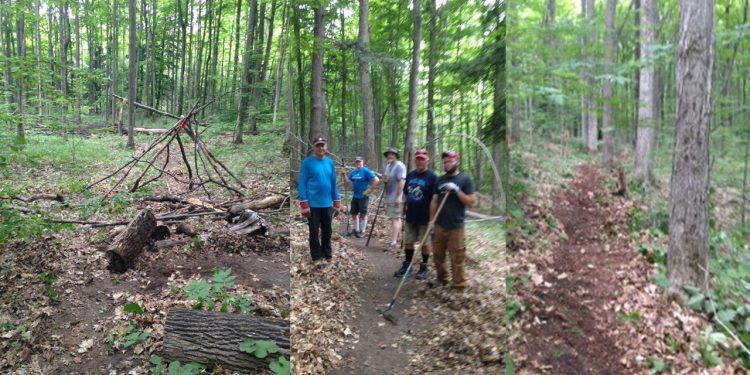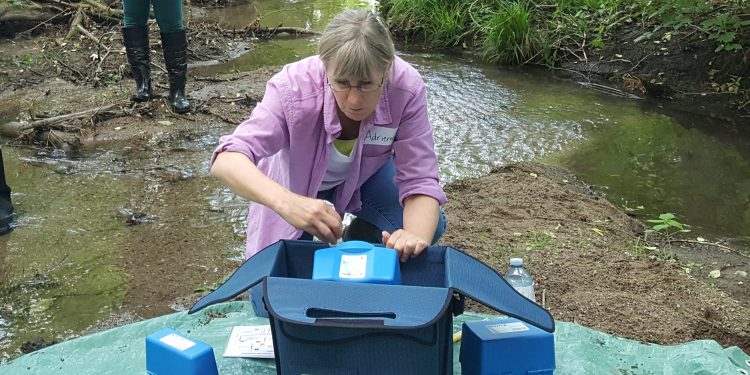The Upland of the Copeland Forest is on the edge of the Oro Moraine. Water seeps out of the hills and helps form the rivers that flow out of the Forest.
In a few instances, single track trails go through these water seepage areas and continued trail usage will lead to a widening of the trails and ecological damage. At the end of June, six mountain bike members of Copeland Forest Friends Association re-routed 200 metres of trail to avoid one of the seepage areas.
It is our hope that this new route will discourage users from traveling through this sensitive area that is below the new trail.
Later this summer, we will add signs at either end asking users to stay on the trail.
Thanks to the trail crew for their hard work: Bob, Tony, Ed, Brian, Kody, Johnathan and John. A special thanks to Bob Hannah for coordinating the project.


